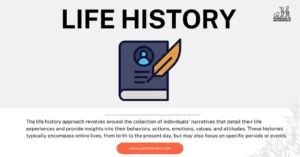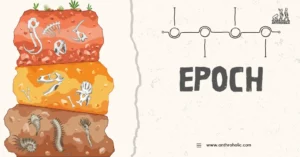AI Answer Evaluation Platform Live Now. Try Free Answer Evaluation Now
Anthropology of Gender and Sexuality
The anthropology of gender and sexuality has emerged as a critical field of study in the discipline of Cultural anthropology over the past several decades. This area of research seeks to understand how societies around the world define, construct, and regulate gender and sexual identities, roles, and relationships. By examining both historical and contemporary societies, anthropologists can analyze the complex social, cultural, and political dynamics that shape the lived experiences of individuals across diverse settings.

Origins of the Anthropology of Gender & Sexuality
A. Early Developments
The anthropology of gender and sexuality has its roots in the late 19th and early 20th centuries when early anthropologists began documenting the roles and statuses of men and women in various societies (Lewin & Leap, 1996). These early studies focused primarily on the division of labor, kinship systems, and marriage practices.
B. Feminist Anthropology
In the 1960s and 1970s, feminist anthropologists began to challenge the male-centric perspectives that had dominated the field (Ortner, 1974). By examining the roles of women in diverse societies, these scholars revealed the importance of gender as a key component of cultural systems and social organization.
C. Emergence of the Anthropology of Gender & Sexuality
The anthropology of gender and sexuality emerged as a distinct subfield in the 1980s and 1990s, as scholars began to investigate the complex interplay between gender, sexuality, and power (Weston, 1993). This shift reflected broader trends in anthropology towards more holistic and dynamic understandings of human culture and society.
Key Concepts in the Anthropology of Gender & Sexuality
A. Gender
- Definition and Distinctions
Gender refers to the social and cultural roles, norms, and expectations assigned to individuals based on their perceived sex (Lorber, 1994). It is important to distinguish gender from sex, which refers to the biological differences between males and females, such as reproductive anatomy and secondary sexual characteristics.
- Gender as a Social Construct
Anthropologists argue that gender is a social construct, meaning that it is created, maintained, and transformed through social processes (Butler, 1990). This perspective challenges essentialist notions of gender as biologically determined and fixed.
B. Sexuality
- Definition
Sexuality refers to the range of human desires, attractions, behaviors, and identities related to eroticism and sexual expression (Weeks, 1986). Like gender, anthropologists view sexuality as a social construct that is shaped by cultural norms and values.
- Sexual Orientation and Identity
Sexual orientation refers to an individual’s pattern of emotional, romantic, and/or sexual attractions to others, while sexual identity refers to how an individual labels or identifies themselves based on these attractions (Savin-Williams, 2005). Common sexual orientations and identities include heterosexual, homosexual, bisexual, and queer.
C. Intersectionality
Intersectionality is a concept that emphasizes the interconnected nature of different social categories, such as gender, sexuality, race, and class (Crenshaw, 1989). Anthropologists argue that these categories interact and overlap to create unique and complex experiences of identity and oppression.
Contributions of the Anthropology of Gender & Sexuality
A. Challenging Binary Models
One of the most significant contributions of the anthropology of gender and sexuality is the critique of binary models of gender (male/female) and sexual orientation (heterosexual/homosexual) (Fausto-Sterling, 2000). By examining diverse cultural systems, anthropologists have demonstrated that gender and sexual identities can be more fluid and complex than these binary models suggest.
- Multiple Gender Systems
Many societies around the world recognize more than two genders, such as the hijra of South Asia (Nanda, 1999) and the Two-Spirit individuals in some Indigenous cultures of North America (Lang, 1998). These alternative gender systems challenge Western assumptions about the universality of binary gender categories.
- Non-heteronormative Sexualities
Anthropologists have also documented a wide range of non-heteronormative sexualities in different cultural contexts, such as the fa’afafine of Samoa (Besnier, 1994) and the “sworn virgins” of Albania (Young, 2000). These examples reveal the diverse ways in which human sexuality can be expressed and understood.
B. Understanding Power Dynamics
The anthropology of gender and sexuality has been instrumental in exposing and analyzing power dynamics within and across cultures (Connell, 1987). This includes examining how gender and sexual hierarchies are maintained and contested, as well as the intersection of these hierarchies with other forms of social stratification, such as race and class.
- Patriarchy and Gender Inequality
Patriarchy refers to social systems in which men hold primary power and authority, often resulting in gender inequality (Walby, 1990). Anthropologists have explored the diverse manifestations and consequences of patriarchy, from domestic violence to unequal access to resources and opportunities.
- Queer Theory and Heteronormativity
Queer theory, a theoretical perspective that emerged in the 1990s, has been influential in the anthropology of gender and sexuality (Butler, 1993). This approach critiques the ways in which heteronormativity, or the assumption that heterosexuality is the “normal” sexual orientation, is reinforced and perpetuated through social institutions and practices.
C. Cultural Relativism and Human Rights
The anthropology of gender and sexuality raises important questions about cultural relativism, the principle that cultural practices should be understood within their own context, and human rights, the idea that all individuals are entitled to certain fundamental rights and freedoms (Merry, 2006).
- Female Genital Mutilation/Cutting (FGM/C)
FGM/C is a controversial practice that involves the partial or total removal of female genitalia for non-medical reasons. While some anthropologists argue that FGM/C should be understood as a culturally significant ritual, others contend that it constitutes a violation of human rights and should be eradicated (Abusharaf, 2006).
- Same-Sex Marriage and LGBTQ+ Rights
The recognition and legalization of same-sex marriage and LGBTQ+ rights have also sparked debates about cultural relativism and human rights. Anthropologists have provided valuable insights into these debates by documenting the diverse ways in which same-sex relationships and LGBTQ+ identities are understood, valued, and regulated across cultures (Murray, 2000).
Conclusion
The anthropology of gender and sexuality has made significant contributions to our understanding of human culture and society by challenging binary models of gender and sexual orientation, examining power dynamics, and engaging with debates about cultural relativism and human rights. As societies continue to evolve and grapple with issues related to gender and sexuality, anthropological perspectives will remain essential for fostering greater understanding and promoting social justice.
References
- Abusharaf, R. M. (2006). Female Circumcision: Multicultural Perspectives. University of Pennsylvania Press.
- Besnier, N. (1994). Polynesian Gender Liminality through Time and Space. In G. Herdt (Ed.), Third Sex, Third Gender: Beyond Sexual Dimorphism in Culture and History (pp. 285-328). Zone Books.
- Butler, J. (1990). Gender Trouble: Feminism and the Subversion of Identity. Routledge.
- Butler, J. (1993). Bodies That Matter: On the Discursive Limits of “Sex”. Routledge.
- Connell, R. W. (1987). Gender and Power: Society, the Person and Sexual Politics. Stanford University Press.
- Crenshaw, K. (1989). Demarginalizing the Intersection of Race and Sex: A Black Feminist Critique of Antidiscrimination Doctrine, Feminist Theory and Antiracist Politics. University of Chicago Legal Forum, 1989(1), 139-167.
- Fausto-Sterling, A. (2000). Sexing the Body: Gender Politics and the Construction of Sexuality. Basic Books.
- Lang, S. (1998). Men as Women, Women as Men: Changing Gender in Native American Cultures. University of Texas Press.
- Lewin, E., & Leap, W. L. (1996). Out in the Field: Reflections of Lesbian and Gay Anthropologists. University of Illinois Press.
- Lorber, J. (1994). Paradoxes of Gender. Yale University Press.
- Merry, S. E. (2006). Human Rights and Gender Violence: Translating International Law into Local Justice. University of Chicago Press.
- Murray, S. O. (2000). Homosexualities. University of Chicago Press.
- Nanda, S. (1999). Neither Man nor Woman: The Hijras of India. Wadsworth Publishing.
- Ortner, S. B. (1974). Is Female to Male as Nature Is to Culture? In M. Z. Rosaldo & L. Lamphere (Eds.), Woman, Culture, and Society (pp. 67-87). Stanford University Press.
- Savin-Williams, R. C. (2005). The New Gay Teenager. Harvard University Press.
- Walby, S. (1990). Theorizing Patriarchy. Basil Blackwell.
- Weeks, J. (1986). Sexuality. Tavistock Publications.
- Weston, K. (1993). Families We Choose: Lesbians, Gays, Kinship. Columbia University Press.
- Young, A. (2000). Women Who Become Men: Albanian Sworn Virgins. Berg Publishers.



